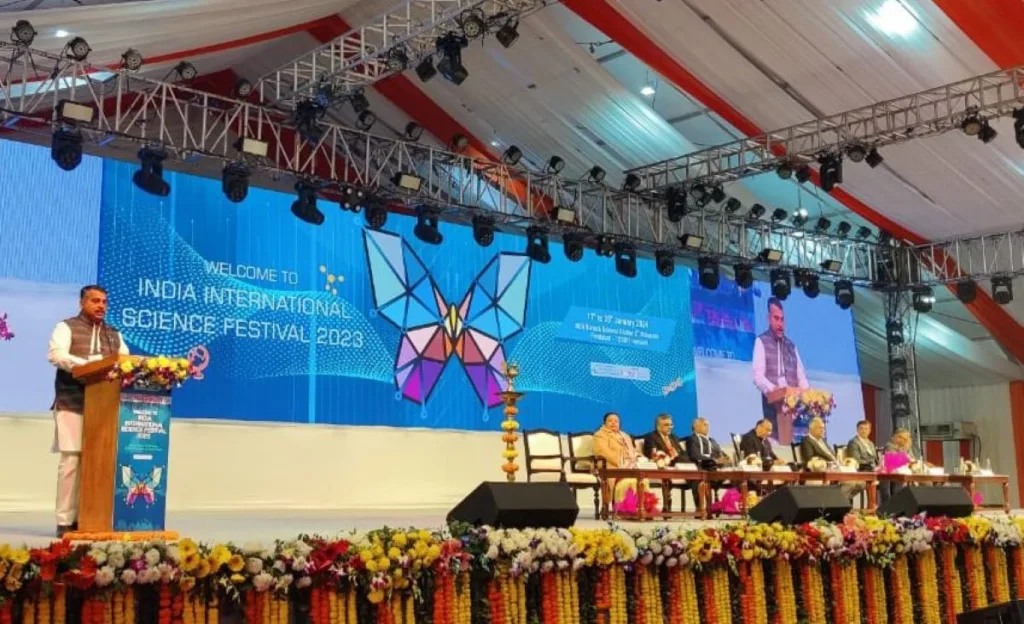The India International Science Festival (IISF) 2023 concluded with a spectacular closing ceremony at the A.P.J. Abdul Kalam Hall, featuring Manohar Lal Khattar, the Chief Minister of Haryana, as the Chief Guest. During the ceremony, the Minister unveiled plans for the development of a groundbreaking “Science City” in Faridabad, emphasizing the government’s commitment to advancing scientific endeavors.
The mega science expo, held at the grand venue, showcased over 100 stalls, with more than 80 representing various government organizations and 20 from private entities. The event attracted an impressive 1 lakh visitors, illustrating the widespread interest and enthusiasm for scientific innovations.
Inaugurating the expo on its first day was Dr. Jitendra Singh, Union Minister of State for the Ministry of Science & Technology. Major institutions such as the Indian Institute of Technology (IIT), Defence Research and Development Organisation (DRDO), Indian Space Research Organisation (ISRO), Ministry of Earth Sciences (MoES), and the Department of Science and Technology (DST) displayed their groundbreaking inventions, aligning with the theme of the ninth edition of IISF, “Public Outreach in Amrit Kaal.”
The expo highlighted India’s contemporary position in the global landscape of science and technology, showcasing the nation’s youthful energy and determination to achieve excellence.
A focal point of the exhibition was the model of the Ram Mandir, capturing attention due to its upcoming inauguration ceremony on January 22, 2024. The unique design, featuring the “Surya Tilak,” was a testament to the scientific ingenuity contributed by the CSIR lab, Central Building Research Institute (CBRI) in Roorkee, Uttarakhand.
Another notable exhibit was the “Pollution-Free Viksit Gaon, Viksit Bharat,” a CSIR initiative envisioning a sustainable and developed rural community contributing to India’s overall progress.
The National Institute of Plant Genome Research (NIPGR), an autonomous institute of the Department of Biotechnology (DBT), showcased its recent achievement, “ADVIKA,” a novel, superior drought-tolerant, climate-smart chickpea variety.
Visitors were treated to live experimental setups at the International Centre for Genetic Engineering and Biotechnology (ICGEB), New Delhi stall, providing an interactive experience.
The mega science expo also recognized outstanding contributions with various awards. Raman Research Institute (RRI) secured the first prize for the Best Conceptual Pavilion, while Defence Research & Development Organisation (DRDO) received top honors in the Best Technology Pavilion category. National Centre for Polar and Ocean Research (NCPOR) won the Best Interactive Pavilion award, and Council of Scientific and Industrial Research (CSIR) took the top spot for the Best Pavilion in the Expo.
The Science Media Communication Cell (SMCC) at CSIR-National Institute of Science Communication & Policy Research (NIScPR) played a crucial role in disseminating and showcasing R&D breakthroughs and scientific achievements through various media platforms during the IISF 2023, aligning with its key objective.
As the curtains fall on the ninth edition of IISF, it leaves behind a trail of groundbreaking scientific discoveries and innovations, showcasing India’s prowess in the field of science and technology.

